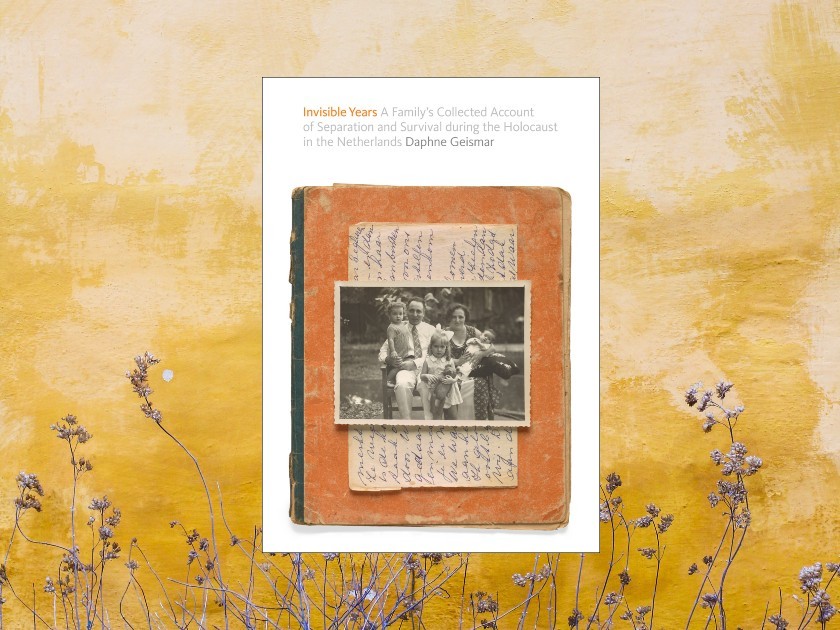
Carefully, I hold the edge of the opaque green curtain against the wall and use my finger to create a small crack, only to grow rigid with fear. On the podium below me, between the pews of the elders and deacons, there are two Grüne Polizei searching everything. And then comes the stage of paralysis, the sense that all is lost.
My grandfather’s words fill my head as I stand alone in the organ loft of the Breeplein Church in Rotterdam, pulling back the heavy curtain to look down into the nave where my grandfather saw the German police.
I wonder whether there’s any point in climbing back into the hiding place. Now the super-heavy ladder still has to be raised. One slip and that’s the end, for the Germans are already below me in the foyer, from which we are separated by thin slats of wood. I close the trapdoor.
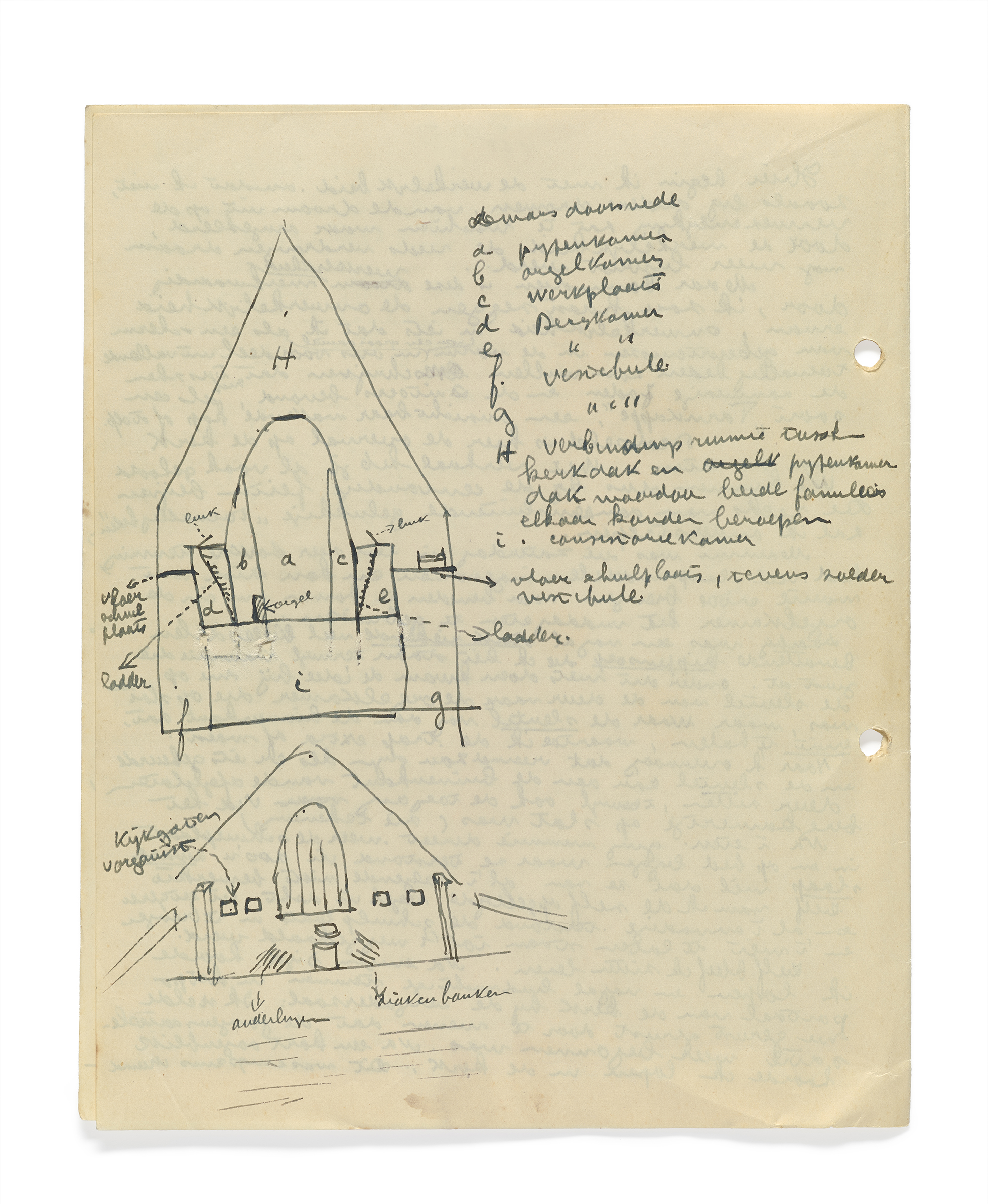
I let the curtain fall and climb the ladder to see the hiding place where my grandparents Chaim and Fifi de Zoete survived the Holocaust. Below a steeply pitched roof, the attic’s brick and cement walls are windowless, and there is no floor, only joists; one must step from beam to beam to avoid falling through the ceiling below.
I imagine how they worried for their eleven‑, ten‑, and nine-year-old daughters: Mirjam (my mother), Judith, and Hadassah. They were hidden with other families, separately, to increase their chances of survival, their long braids were cut and Jewish Stars removed.
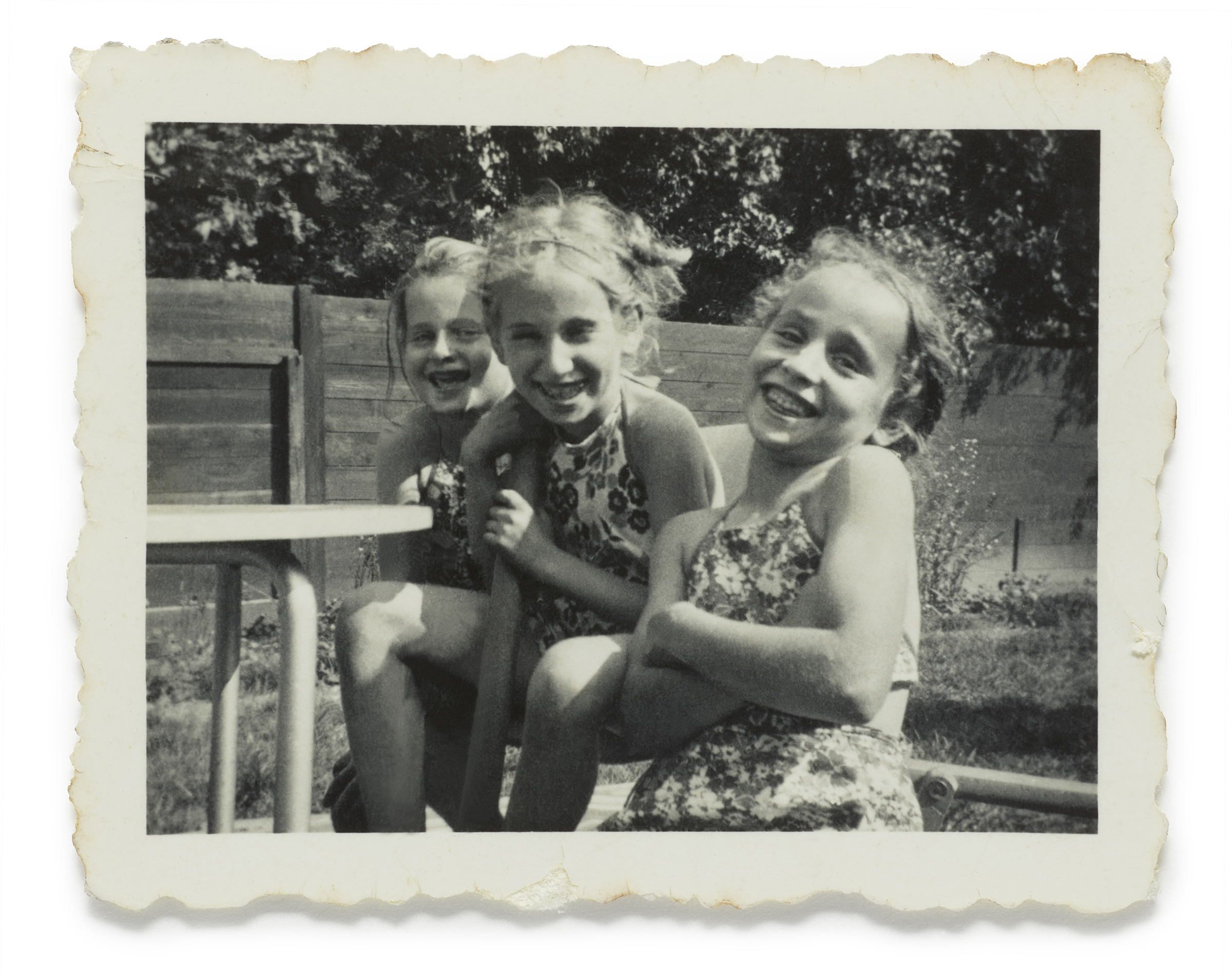
Judith wrote about the day they went into hiding:
We, Hadassah and me, regarded this as some kind of adventure, but for our parents it probably was one of the hardest things they ever did in their whole life. Our parents told us, “Go to Uncle Kees. But before you reach his house, make a stop and go under one of the bridges on the way, and take off your jacket and leave it there.” (My Jewish Star was sewn onto a jacket, which we put on top of whatever we were wearing.) “Once you reach his house, he will take care of everything.”
My visit to the church in 2006 was the beginning of a deep and emotional investigation into my family’s wartime experience.
While in the Netherlands, my mother, Mirjam, and her sister, Judith, told us about the particulars of their experiences as onderduikers (people in hiding) and shared stories of other family members hidden throughout the Netherlands: Chaim, Fifi, Hadassah, David (Mirjam’s husband and my father), and Nathan (Judith’s husband). I observed that no person had the complete story because secrecy had been paramount. Everyone knew only his or her own experience but were unaware of related details, parts too painful to tell, or memories lost over time. More than sixty relatives did not survive to share their own accounts. In Rotterdam, I understood that the stories I thought I knew were broader and more interconnected than I had realized, and that the story-holders were aging. My cousin Sharon (Judith and Nathan’s daughter) and I made plans to piece together the history of our families during the German occupation of the Netherlands.
Back home in Connecticut, my mother surprised me by leading me to an antique desk and sliding open a bottom drawer packed with journals and papers. Inside this drawer lined with beautiful paper (which became the endpapers of my book), she had put everything Holocaust related. When I called my cousin Sharon in Israel to tell her the news, she exclaimed that, amazingly, her mother Judith had a Holocaust drawer too. The quantity of material that survived in these drawers — until then unknown to us — is remarkable. We found our grandparents’ personal and official documents that were created during the occupation and shortly after; we discovered our parents’, aunts’, and uncles’ accounts and interviews, in which they reflected back on their experiences over fifty years later.
We discovered Judith’s Jewish Star, Chaim’s and Fifi’s journals and letters, and — a miracle —a forty-nine-page memoir written by my paternal grandfather, Erwin Geismar. He began writing it on July 21, 1943, in the Amsterdam apartment where he was hidden, two days after he had sent his thirteen-year-old son, David (my father), to a safer address. Erwin meticulously documented the occupation, his work for the Jewish Council, and his distress over the fate of his family and all Jews. Six weeks later, he was captured by the Germans and, on November 19, 1943, murdered in Auschwitz:
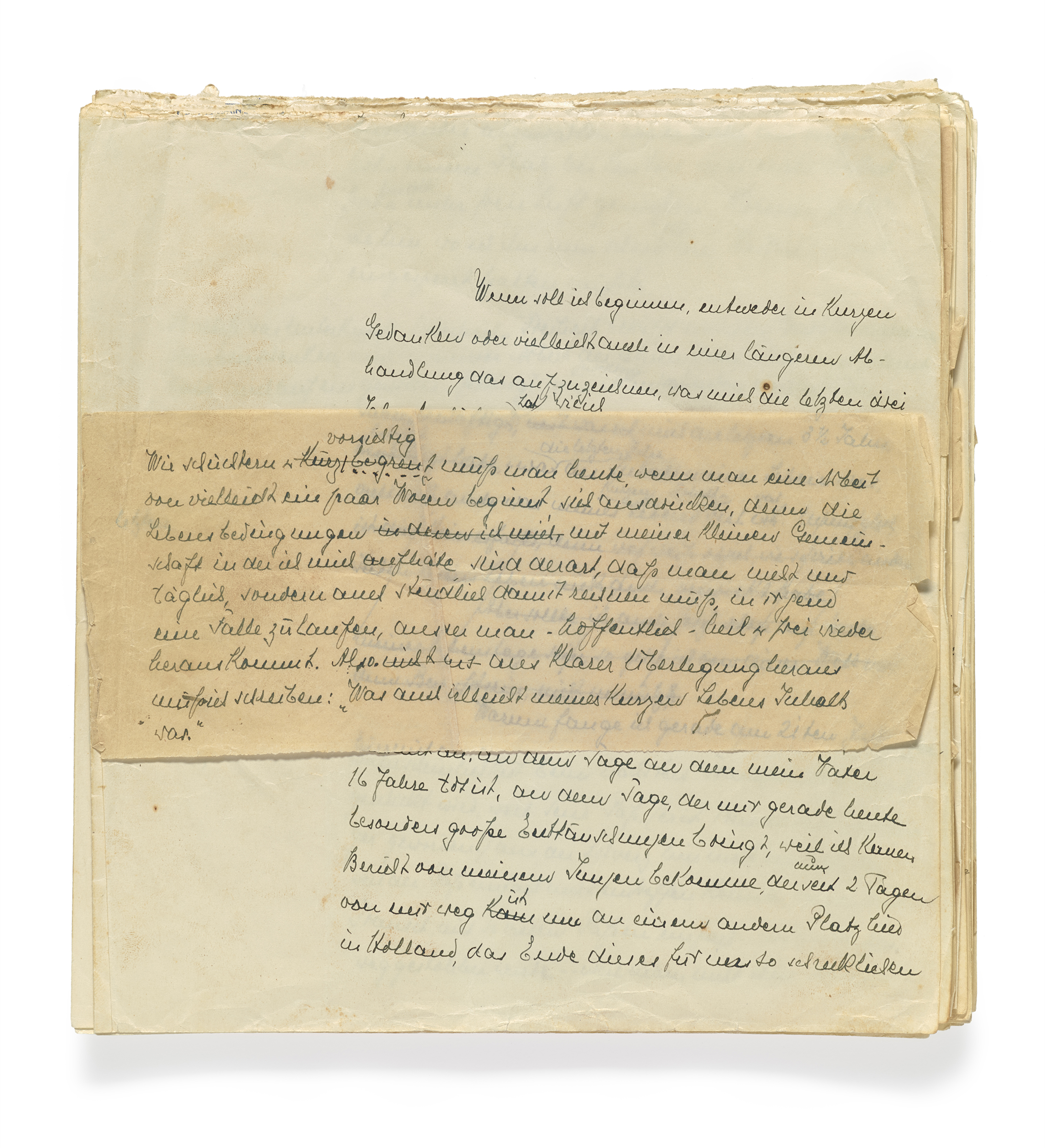
How shall I begin to record the things that occupied me during the last three and a half years? Why do I begin just on the 21st of July? On a day that brings me particular disappointments because I have received no news about my son, who left me two days ago to go to a different place in Holland? There, he will wait for the end of this awful situation.
Why begin today, when worries plague me, worries about family and human life? Worries about my father-in-law, whom I’ve been able to keep in the Westerbork transit camp for three and a half months, who now most likely will be sent on the next transport day to a death camp, because they want to annoy, deport, and murder not him, but simply all Jews.
As Sharon and I orchestrated the slow process of translating Dutch and German documents from our mothers’ Holocaust drawers, our search turned up other treasures. I learned that my grandfather Chaim was one of the first Jews to ask Yad Vashem, the World Holocaust Remembrance Center in Israel, for commemorations for those who helped his family. Chaim submitted twelve letters. Each is a story of its own, with specifics of hiding addresses, circumstances, names, occupations, and motivations of those who helped. With this information, I was able to create a map of my family members’ hiding locations across the Netherlands.I also discovered a thin sheet of paper, written on both sides in Fifi’s handwriting, dated April 23, 1943, the day that all Jews in the Netherlands living outside of Amsterdam had to report to the Vught concentration camp.
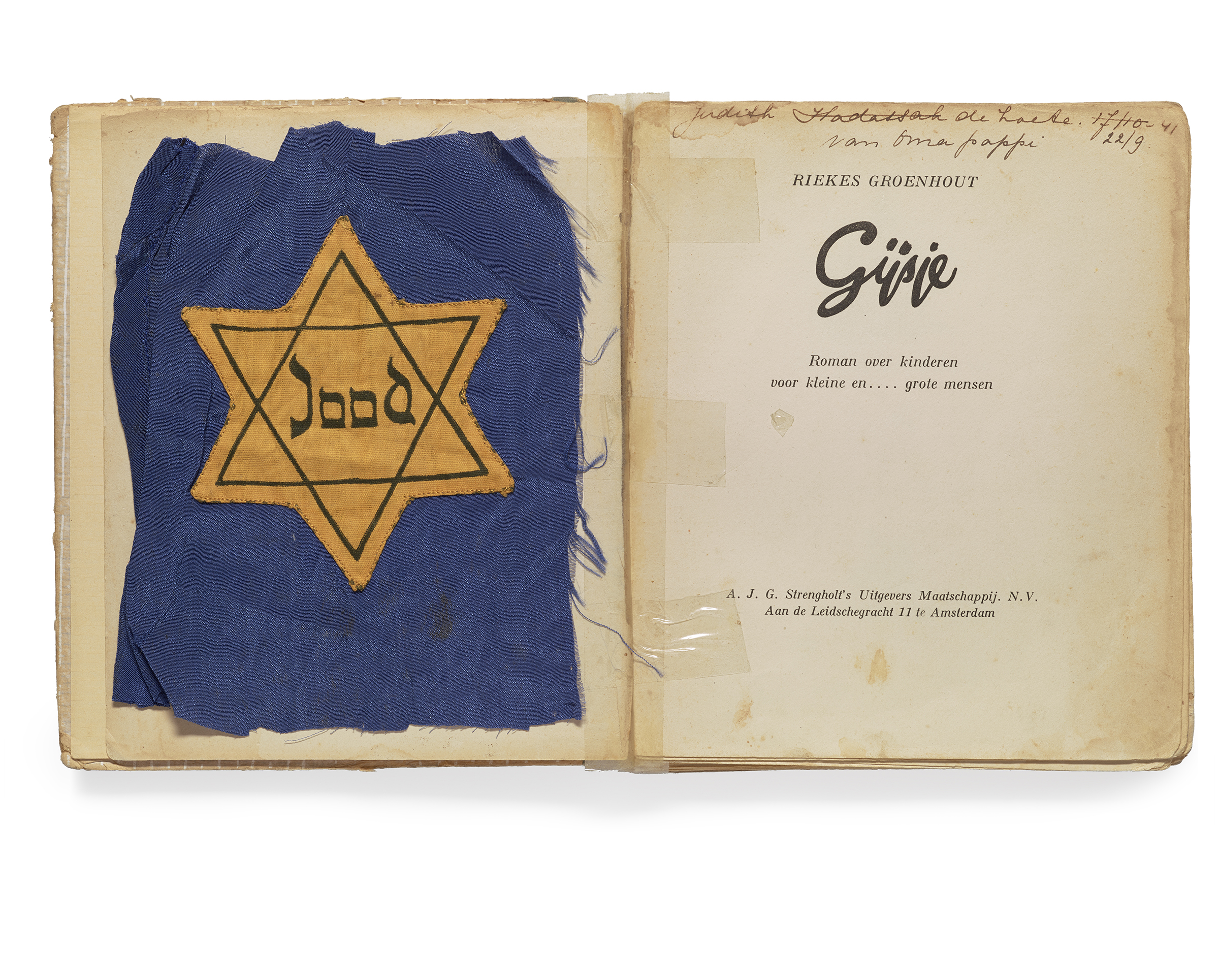
“We discovered Judith’s Jewish Star, Chaim’s and Fifi’s journals and letters…”
My mother translated it on the spot:
April 23, 1943: Today is the last day that the Germans are tolerating Jews in the Netherlands. Does everyone have to go to Vught? My husband and I won’t go. We’re staying with Jewish friends who until today had an official stamp. Tonight we have no prospect of a roof over our heads.
In her diary, Fifi goes on to tell of meeting Reverend Brillenburg Wurth, who spontaneously arranged for them to hide with one of his parishioners. This was Chaim and Fifi’s eighth hiding address. When they had to move again six weeks later, Chaim wrote:
Reverend Brillenburg Wurth again came to our aid by offering Fifi and me a hiding place in his church. The place between the ceiling and the roof of the church was so gloomy that he thought we could stay no longer than several weeks, but we remained there [for two years] until the end of the war. The sexton of the church, Mr. de Mars, was taken into confidence by Reverend Brillenburg Wurth, and it came out that Mr. de Mars was already hiding four Jewish people under the church roof. Another hiding place was constructed on the opposite side of the church at the height of the organ’s wind work [for us].
As our archive turned into a book, Judith revealed that she had left out a part of her story that was too difficult to talk about. When we realized that our book might be published, Judith decided that it was important to share the painful truth of her complete story with the world. Judith sent me a photograph of the family she hid with for the last two years. On the back she wrote, “He is the one!” Other handwritten notes describe the crimes committed against her by the father and his two sons. Judith wrote about this in a sealed letter, originally intended for her daughters to read after her death:
The last family I was hiding with was where it happened. The father and two of his sons, sixteen and seventeen years old, abused me. There was nothing I could do, and nobody I could go to.… I never told my parents.… Years after, Pappie [submitted] their names to the Righteous list in Yad Vashem. And sometime later, they sent us a letter with pictures of the ceremony in the Israeli Consulate, where they got a medal and a certificate, and trees planted in their name for saving a Jewish life.
In what would be the final phase of our research, Sharon and I united to collect the missing pieces and to visit some of the locations on our map of family hiding addresses. In April 2016 I went to Israel and met with the director of the Righteous at Yad Vashem to see my grandfather’s letters and, having learned Judith’s full story, to ask them to remove a name from the Righteous.
Sharon and I next flew to the Netherlands. We visited a historical society in the Dutch town of Gendt to pick up a photograph of Theo van Dalen, a police officer dedicated to sabotaging the German war effort. Theo and his wife, Betsy, hid Sharon’s father, twelve-year-old Nathan, with his entire family, as well as Allied pilots whose planes had been shot down by the Germans. Nathan’s account reads like an adventure story:
The Germans shot down bombers and fighters over Holland. Theo must have had good contacts with the Dutch underground, because that winter he had more guests — Canadian, English, and American pilots on their way back to England.… I practiced my English and my chess on the poor downed aircrew members.… We also kept war maps which we prepared ourselves, first tracing them from the world atlas, and then enlarging them by scaling.… we had two different lines of pins [for Russia], sometimes hundreds of kilometers apart — one where the Germans said the front was, and one where the BBC said the front was.
Ten years after the visit to the Breeplein Church, we decided we had all that we needed to bring the stories together into a book. In reading and rereading the letters, diaries, interviews, and documents, I understood that my relatives — the Geismar, De Zoete, and Cohen families — offered distinct perspectives on a shared story.
As I ruminated on how to construct the book, I experimented by printing out, cutting up, and then sequencing all the text in the archive, arranging it so that my family members were speaking to one another. I could see that, when woven together, their separate voices formed a single narrative. It was then, while sitting at the kitchen table to read their interwoven accounts, that the heartbreaking horror of their collective experiences hit me, and I put my head on the table to weep.
___
More than fifty sources compose the narrative mosaic of Invisible Years: A Family’s Collected Account of Separation and Survival during the Holocaust in the Netherlands. All excerpts in this essay are from this narrative.
Daphne Geismar designs books on art and history for major museums. Her involvement in publications that use art and literature to educate, began with her thesis at Yale on Direction magazine (1937−1945), in which artists and writers speak out against fascism. Geismar developed a photography and writing program for teenage mothers and teaches design at universities.